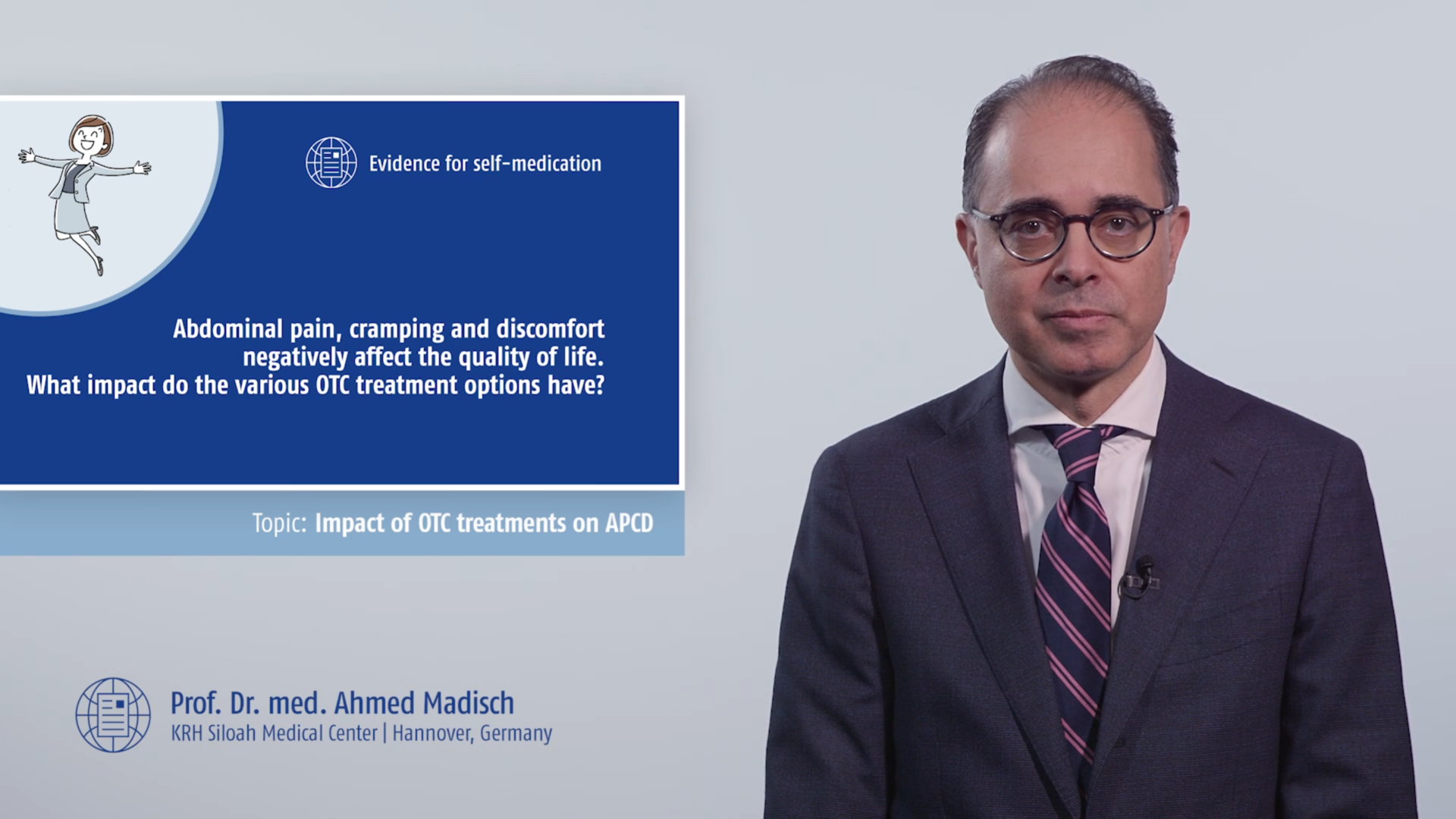Abdominal pain, cramping and discomfort are common and affect up to one-third of the adult European population. One of several causes is irritable bowel syndrome, which can show prevalences – depending on the country – of up to 20%.
 Global
GlobalAbdominal pain, cramping and discomfort impair women's quality of life: an internet-based observational study focussed on treatment
Non-prescription medicines/over the counter preparations, such as spasmolytics (e.g. hyoscine butylbromide), celandine-containing alcoholic plant extracts (e.g. STW5) or analgesics are often used for self-treatment. A research team led by Prof. Enck conducted an internet-based survey to investigate the extent to which these abdominal symptoms impaired women’s quality of life and how the efficacy and tolerability of various medicinal products were assessed [1].
Methods
Internet-based observational study among women in Germany who suffered from abdominal pain, cramping and discomfort and who treated these symptoms with hyoscine butylbromide, STW5 or analgesics (240 questioned per treatment). The survey consisted of questions about quality of life, efficacy and tolerability (e.g. “How often has treatment of the [SYMPTOM] with [PRODUCT] helped you to continue your daily activities?”, “How often have you experienced improvements in the quality of your work due to treatment of the [SYMPTOM] with [PRODUCT]?”).
Results
96% of the 720 women surveyed stated that abdominal pain, cramping and discomfort sometimes affected their daily activities, and 44% reported that this happened frequently. Other aspects of quality of life – such as quality of work, social activities or eating habits – were also often impaired.
The medicinal products used for treatment were rated as effective by the majority of women: 91% of those in the hyoscine butylbromide group reported that they were “often” or “very often” able to continue their daily activities (84% in the STW5 group, 85% of those who took analgesics). The differences between hyoscine butylbromide and the other two groups were significant (p<0.05; Fig. 1). A higher proportion of women, namely 86%, stated that hyoscine butylbromide was “often” or “very often” the best solution for treating the symptoms (STW5: 75%, analgesics: 74%; p<0.05).
Fig. 1: Abdominal pain, cramping and discomfort and the effects of the products used on the quality of life of women in Germany. Hyoscine butylbromide was rated significantly better than STW5 or analgesics. The numbers under the columns vary, because women who reported no impairment of their quality of life were excluded from the survey.
Discussion and conclusions
Abdominal pain, cramping and discomfort impair the quality of life of women and, in the view of those affected, can be successfully treated with hyoscine butylbromide and statistically less significantly successfully with STW5 or analgesics.
Literature
- Enck P, Koehler U Weigmann H, Mueller-Lissner S. Abdominal pain, cramping or discomfort impairs quality of life in women: An internet-based observational pilot study focussing on impact of treatment. Z Gastroenterol. Mar; 2017;55(3): 260–266. doi: 10.1055/s-0043-100022. Epub 2017 Mar 13.
Conflict of interest: H. Weigmann is an employee of Sanofi.
Disclosure: Medical writing and publication funded by Sanofi Aventis Deutschland GmbH.

